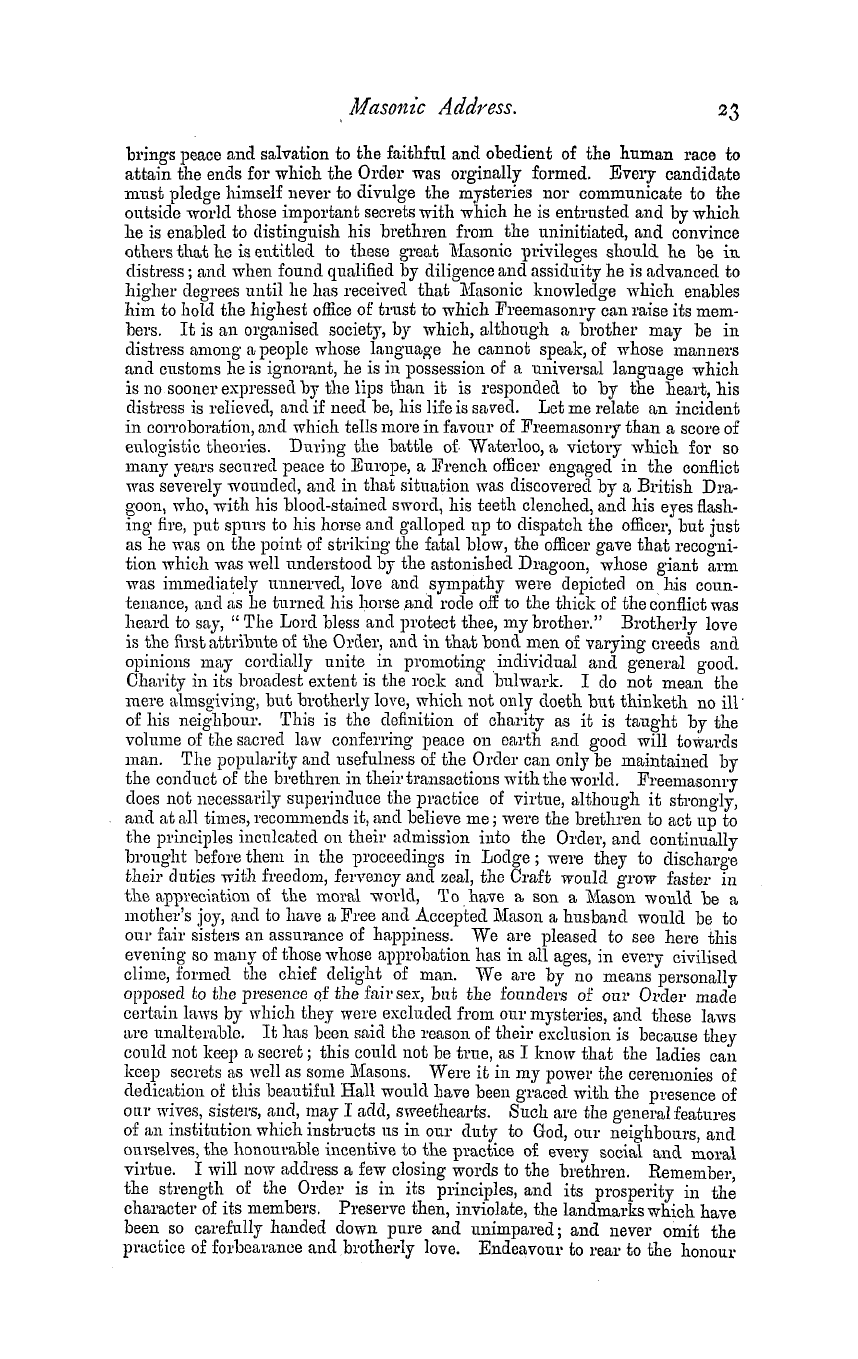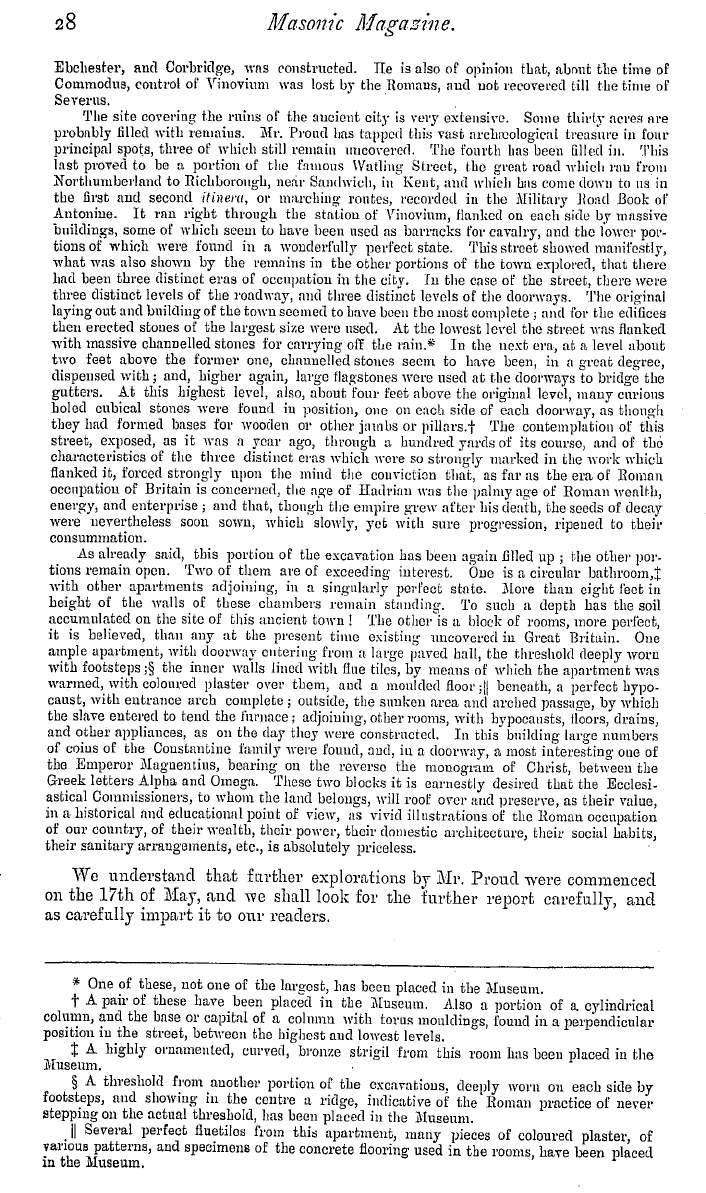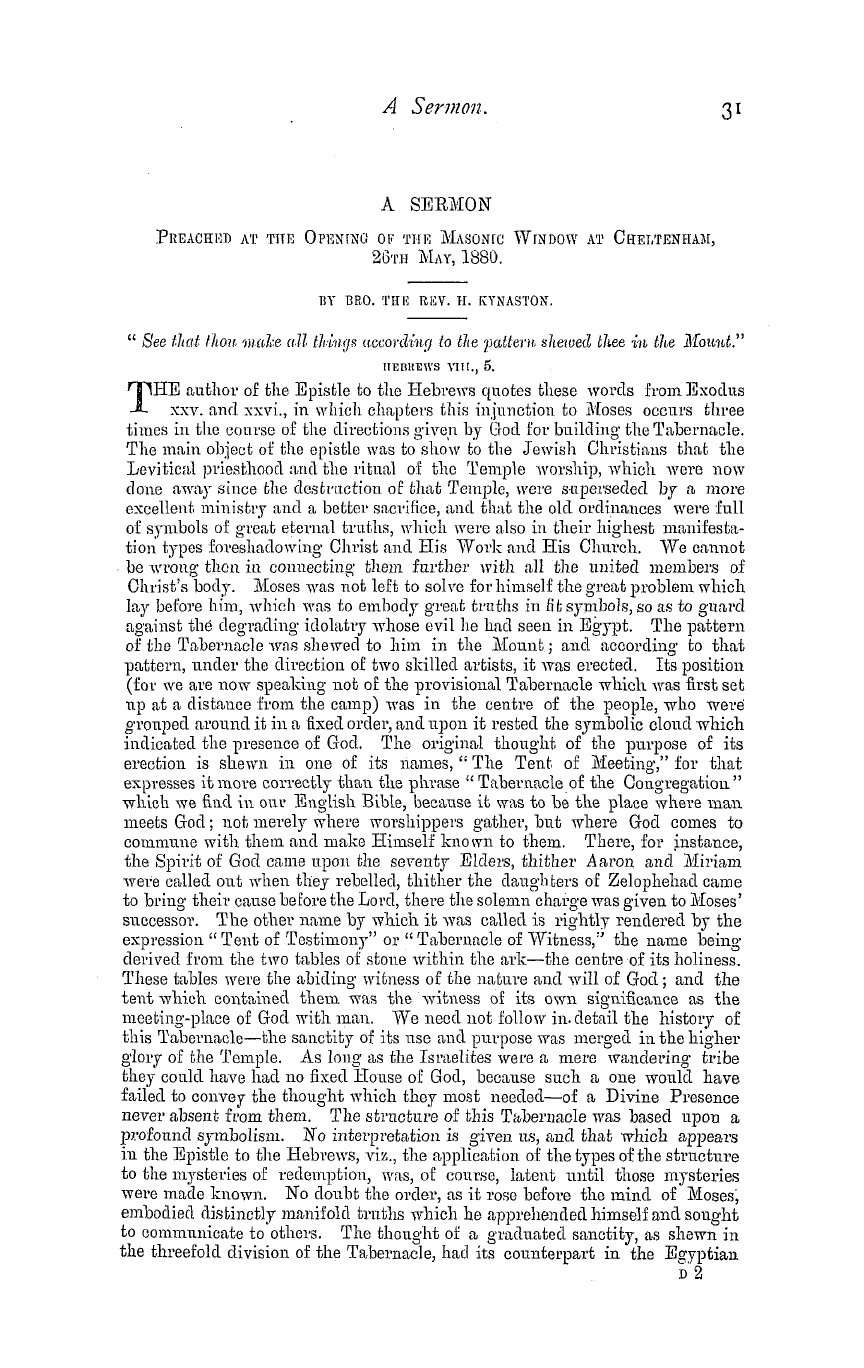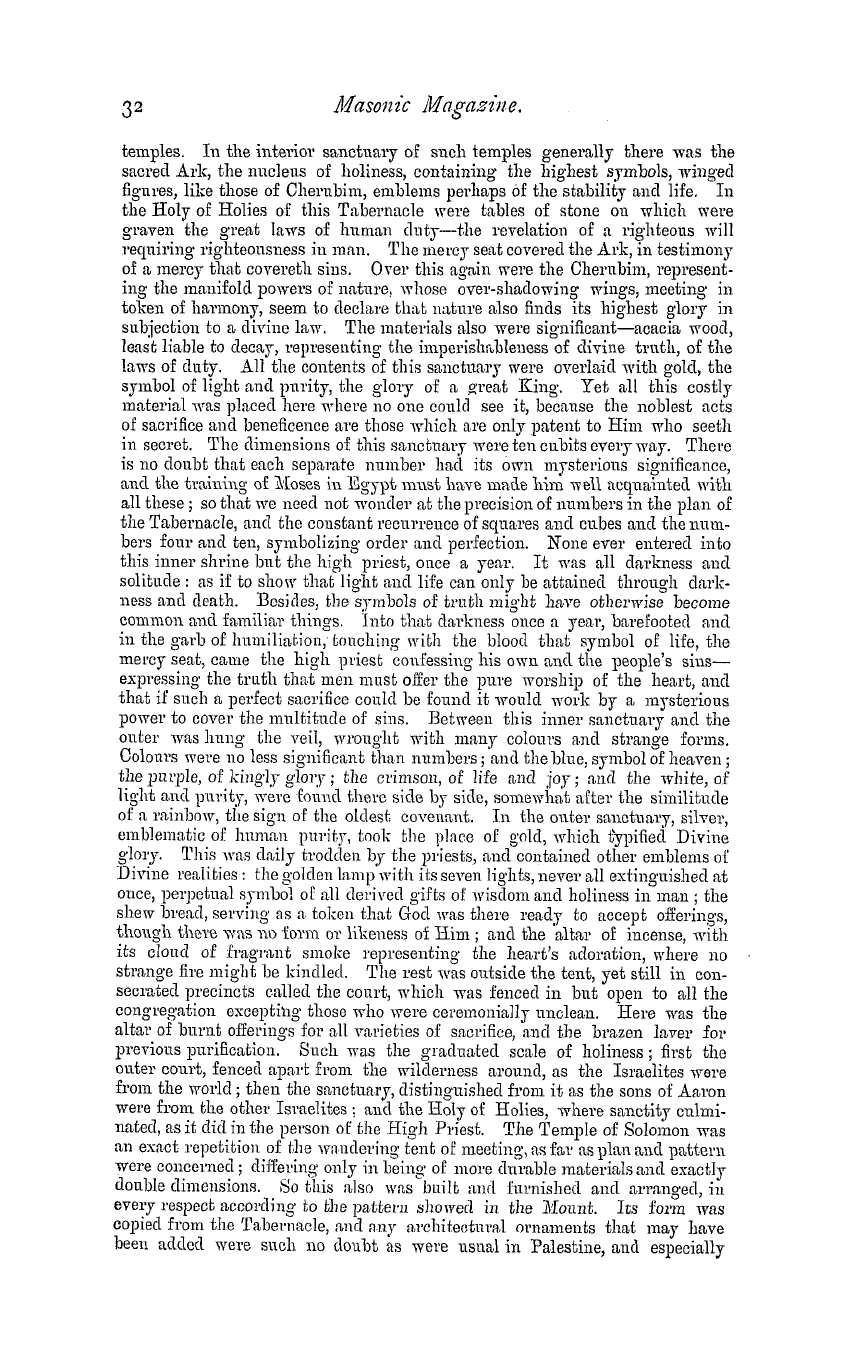-
Articles/Ads
Article THE RUNES.* ← Page 2 of 2
Note: This text has been automatically extracted via Optical Character Recognition (OCR) software.
The Runes.*
alphabet is very meagre . The Greek inscription from the Nogai steppe is only a fragment , and the great Olbian inscription * is useless for our purpose , as it belongs to a very much later period . We have to rely mainly on the evidence of a few Thracian coins , notably a large gold coin of Geta , King of the Edoni , now in the British Museum , which is believedf to belong to the sixth century . B . C ., and several coins of the Orreskioi of about the same date . But there is no lack of inscriptions of the required date belonging to the cities and islands from which the Thracian and Euxine alhabet must hava been derived . Wo have much
p early pottery from Thasos . J together with the celebrated inscription from Sigeuni , several from Miletus , the mother city of Olbia , and many more § from Paros , Siphnos , Naxos , Melos , Samos , and Chalcis , all of them belonging to the end of the sixth century B . C . The evidence of the Thracian coins goes to show that the Thracian alphabet was identical with the alphabet of the mother cities of the Thracian colonies , which is usually designated as the second alphabet of Ionia and the Isles . II
It is , indeed , a somewhat startling theory at first which brings the Thracian alphabets to the Goths , ancl through the Goths to Rome and Germany and England , but we venture to think that Mr . Taylor is on the ri ght track . As he says , and says truly , But a nation which held possession of the amber coast of the Baltic , and also extended so far southward as to occupy the upper basin of the Dnieper , would almost necessarily be in commercial intercourse with the
enterprising Greek traders who had the command of the commerce of this great river . From the earliest times the trade route between the Baltic and the Euxine was by the waterway of the Dnieper , which rises within 200 miles of the Baltic coast . It was by this route , the Austrvegr or Eastway , that the Varangian vikings from Swedish Gothland descended from the north aud swarmed along the coasts of the Black Sea , and even laid siege to Constantinople . The Dnieper ( Borysthenes ) was known to the Greeks as early as the seventh century B . C ., and the valuable trade of this great natural hi
ghway was in the possession of the Greek colonies which were established near its southern outlet . The importance of the Greek commerce of the Dnieper is evident from the statement of Herodotus , who had himself visited Olbia , the flourishing Greek colony established at its mouth . Herodotus speaks of the Borysthenes as being , next after the Nile , the greatest and most valuable river of the earth . He adds that it was known as far as the district of Gorrhos , forty days' journey from the sea . Now the distance in a straight line between the Black Sea and the Baltic is not more than 700 miles , and the northern half of this have
space lay , as we seen , within the limits of the Gothic realm , the southern frontier of which would not bo more than 400 miles from Olbia , or about the distance of Olbia from Byzantium . Now ' since the Greek merchants from Olbia ascended the river for a distance of forty days' journey , and if we reckon a clay ' s journey at fifteen miles , and make sufficient allowance for the windings of the stream , this will bring Gerrhos into close proximity with the southern border of the Gothic occupancy , if not actually within it . ^ f It may therefore be assumed that in the sixth and following centuries there was sufficient opportunity for the Goths on the Pripet to acquire a knowledge of the Greek alphabet from the Greek merchants who traded on the Dnieper for the amber and other products of the Gothic realm .
We recommend our readers to stud y this valuable ancl striking work carefully , as we have onl y given a bare outline of it , the more so as the author ' s words are well wei g hed , and he writes clearly , convincingly , and well . How wonderful it is to-day , if we pause to reflect , seems the onward march of investigation and exploration ; the mysteries of the old past are unveilinoone by one , and we wdio like such studies , ancl can find healthrecreation in
y such investigation , ought to be grateful to writers like Mr . Taylor , wdio labour so earnestl y to open out ancl li ghten up all that superstition would darken and ignorance conceal , but which learning and science would illustrate and explain for wondering students in this enquiring age .
Note: This text has been automatically extracted via Optical Character Recognition (OCR) software.
The Runes.*
alphabet is very meagre . The Greek inscription from the Nogai steppe is only a fragment , and the great Olbian inscription * is useless for our purpose , as it belongs to a very much later period . We have to rely mainly on the evidence of a few Thracian coins , notably a large gold coin of Geta , King of the Edoni , now in the British Museum , which is believedf to belong to the sixth century . B . C ., and several coins of the Orreskioi of about the same date . But there is no lack of inscriptions of the required date belonging to the cities and islands from which the Thracian and Euxine alhabet must hava been derived . Wo have much
p early pottery from Thasos . J together with the celebrated inscription from Sigeuni , several from Miletus , the mother city of Olbia , and many more § from Paros , Siphnos , Naxos , Melos , Samos , and Chalcis , all of them belonging to the end of the sixth century B . C . The evidence of the Thracian coins goes to show that the Thracian alphabet was identical with the alphabet of the mother cities of the Thracian colonies , which is usually designated as the second alphabet of Ionia and the Isles . II
It is , indeed , a somewhat startling theory at first which brings the Thracian alphabets to the Goths , ancl through the Goths to Rome and Germany and England , but we venture to think that Mr . Taylor is on the ri ght track . As he says , and says truly , But a nation which held possession of the amber coast of the Baltic , and also extended so far southward as to occupy the upper basin of the Dnieper , would almost necessarily be in commercial intercourse with the
enterprising Greek traders who had the command of the commerce of this great river . From the earliest times the trade route between the Baltic and the Euxine was by the waterway of the Dnieper , which rises within 200 miles of the Baltic coast . It was by this route , the Austrvegr or Eastway , that the Varangian vikings from Swedish Gothland descended from the north aud swarmed along the coasts of the Black Sea , and even laid siege to Constantinople . The Dnieper ( Borysthenes ) was known to the Greeks as early as the seventh century B . C ., and the valuable trade of this great natural hi
ghway was in the possession of the Greek colonies which were established near its southern outlet . The importance of the Greek commerce of the Dnieper is evident from the statement of Herodotus , who had himself visited Olbia , the flourishing Greek colony established at its mouth . Herodotus speaks of the Borysthenes as being , next after the Nile , the greatest and most valuable river of the earth . He adds that it was known as far as the district of Gorrhos , forty days' journey from the sea . Now the distance in a straight line between the Black Sea and the Baltic is not more than 700 miles , and the northern half of this have
space lay , as we seen , within the limits of the Gothic realm , the southern frontier of which would not bo more than 400 miles from Olbia , or about the distance of Olbia from Byzantium . Now ' since the Greek merchants from Olbia ascended the river for a distance of forty days' journey , and if we reckon a clay ' s journey at fifteen miles , and make sufficient allowance for the windings of the stream , this will bring Gerrhos into close proximity with the southern border of the Gothic occupancy , if not actually within it . ^ f It may therefore be assumed that in the sixth and following centuries there was sufficient opportunity for the Goths on the Pripet to acquire a knowledge of the Greek alphabet from the Greek merchants who traded on the Dnieper for the amber and other products of the Gothic realm .
We recommend our readers to stud y this valuable ancl striking work carefully , as we have onl y given a bare outline of it , the more so as the author ' s words are well wei g hed , and he writes clearly , convincingly , and well . How wonderful it is to-day , if we pause to reflect , seems the onward march of investigation and exploration ; the mysteries of the old past are unveilinoone by one , and we wdio like such studies , ancl can find healthrecreation in
y such investigation , ought to be grateful to writers like Mr . Taylor , wdio labour so earnestl y to open out ancl li ghten up all that superstition would darken and ignorance conceal , but which learning and science would illustrate and explain for wondering students in this enquiring age .
















































